
- This web page was produced as an assignment for an undergraduate course at Davidson College -
My Favorite Yeast Expression: YLR243W
YLR243W is a yeast gene of unknown molecular function, biological process, and cellular component. In My Favorite Yeast Gene Page, I have previously predicted that YLR243W is an essential cytosolic ATP-binding protein. Using Expression Connection and the scale provided below, I have isolated the public-domain experiments where YLR243W undergoes a repression or induction change of at least |2|.

The strongest response of YLR243W is a 7.7 fold repression in response to environmental changes, including certain heat shocks (Gasch et al., 2000). Oddly, YLR243W is also slightly induced (+1.7) in response to different heat shock experiments. The induction pattern for YLR243W over time for the various experiments (as well as 20 other similarly expressed genes with Pearson correlation of >0.8) is shown below. It is interesting to note the molecular function, biological process, and cellular component of correlated genes below. Many of the proteins are involved either in rRNA processing or transcription, and most of the proteins are located in the cytosol or nucleus.
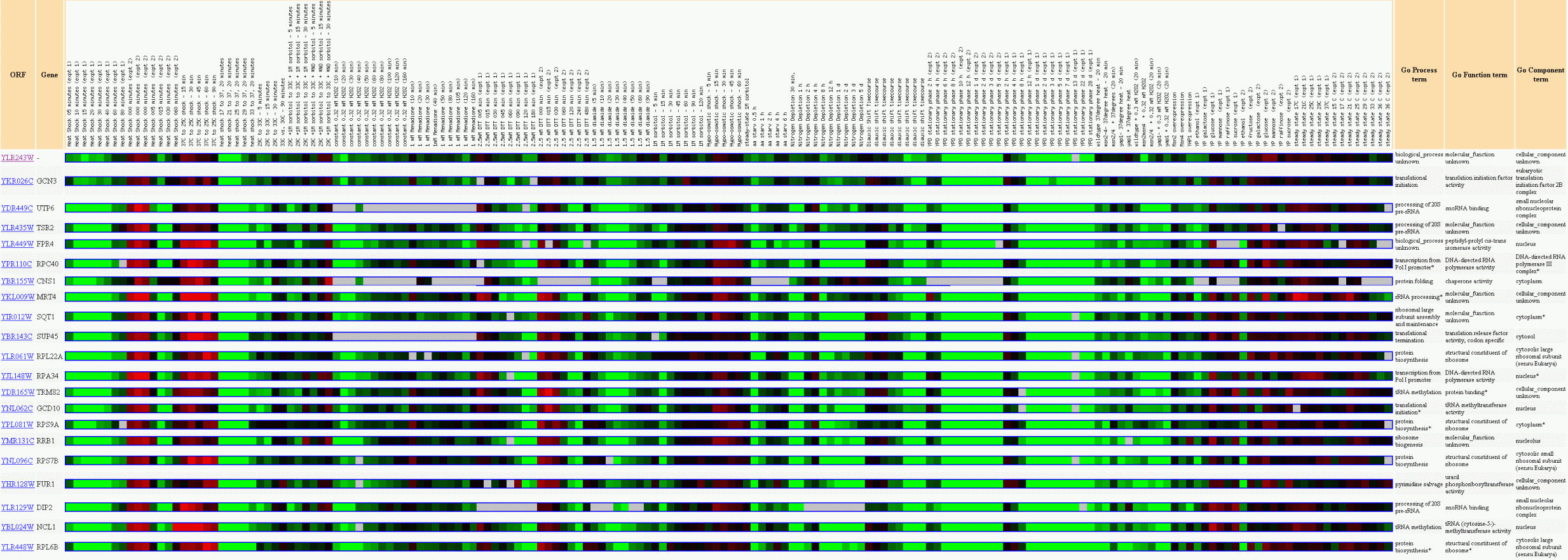
Another experiment to characterize the repression of YLR243W is in response to DNA damaging agents (Gasch et al., 2001). This experiment indicates that YLR243W undergoes nearly 4 fold repression in response to gamma irradiation. Several other genes were found with a Pearson correlation of >0.8, including RPA34, which likewise correlated to YLR243W in the experiment above. The data concerning the effect of DNA damaging agents on YLR243W and similar genes is listed below. Note that again, many of the similar genes are involved in transcription control or RNA processing.
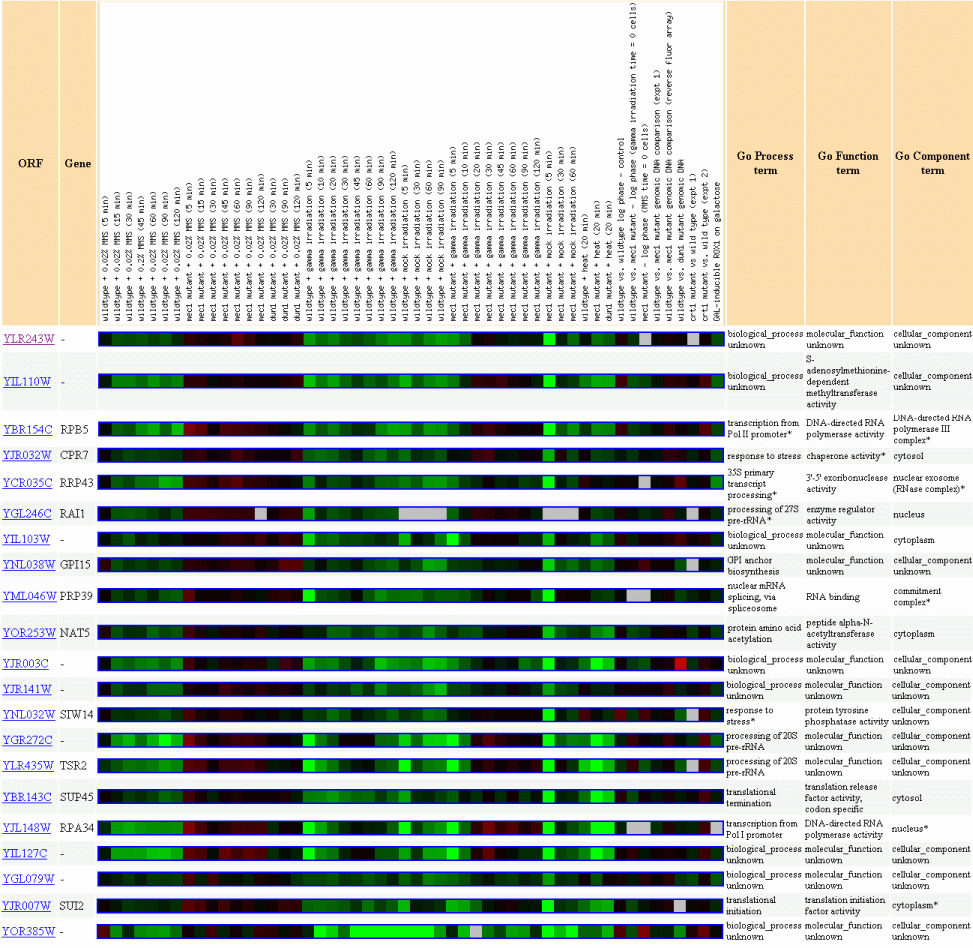
In a foundational genomics study, Pat Brown's lab investigated the expression of yeast genes during the diauxic shift (DeRisi et al., 1997). The diauxic shift refers to movement from anaerobic to aerobic respiration. It would be expected that the shift will correlate with widespread changes in expression of genes in fundamental processes. YLR243W was found to be repressed over the course of several hours as this shift occurred. Several genes correlated with this repression, mostly proteins of unknown molecular function. None of the top 20 genes are correlated to genes from the two experiments above, but again many of the genes are implicated in rRNA modification. The chart below lists the correlated genes, and the graph indicates the level of fold repression of YLR243W during the experiment.
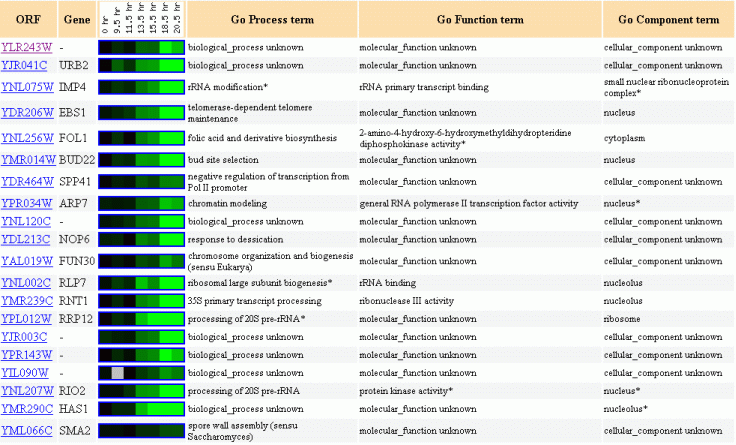
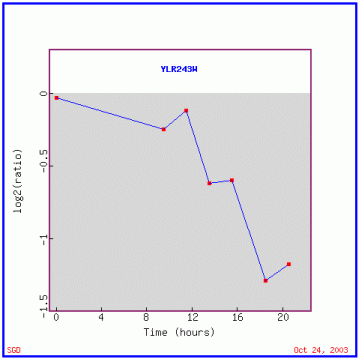
Finally, another database may be consulted to describe the expression of YLR243W . Function Junction is an online tool capable of searching many database resources, including the Yeast Microarray Global Viewer (from the Laboratoire de Genetique Moleculaire in Paris, France). Results from this search are pictured below. Each box represents a unique experiment involving yeast genes and various experimental conditions. Unfortunately, these data are not especially helpful in elucidating the function of YLR243W.
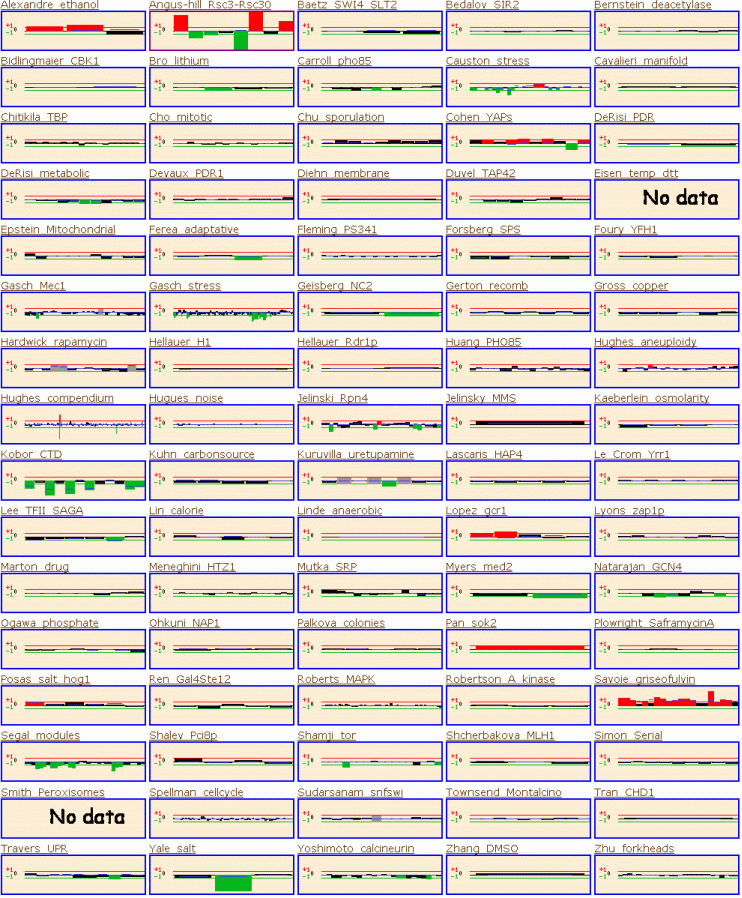
These online database searches serve to better characterize the unannotated gene YLR243W. During stressful conditions including DNA damage and select heat shock experiments, YLR243W is repressed. Additionally, YLR243W is repressed during the diauxic shift in yeast metabolism. Throughout this search, YLR243W has correlated with genes associated with transcription, RNA modification, and ribosomal biogenesis. Since ribosomes are riboproteins containing rRNA, I predict that YLR243W is involved in the formation of ribosomes. Previously, I predicted YLR243W to be an essential cytosolic protein with ATP-binding activity. These predictions are consistent, since ribosomal biogenesis is an essential cellular function and would most likely require the use of ATP energy. In future searches, proteomic databases will be consulted to better characterize YLR243W.
For more data from this assignment, go to My Favorite Yeast Expression of EST1.
This page created by: Gray Lyons
![]()
Return to My Genomics Homepage
Return to the Genomics Course Homepage
Return to the Davidson College Homepage